How we created the biggest animal bite force database to date
Published in Ecology & Evolution, Protocols & Methods, and Zoology & Veterinary Science
Explore the Research

A bite force database of 654 insect species - Scientific Data
Scientific Data - A bite force database of 654 insect species
In this blog post we share our personal journey and the story behind the paper “A bite force database of 654 insect species”, that was recently published in Nature Scientific Data. It covers the entire trajectory from conception to publication, it includes the highs and lows, and it describes the challenges we have faced on the way.
Context
In early 2018, I wanted to start modelling stress distributions across insect heads during biting. As input data, I needed bite force values of different insect species. A quick look into the literature showed that bite forces have been measured in only around 30 insect species so far. Most of these were ants, beetles, or dragonflies. It became evident that we are completely lacking knowledge on the evolution and drivers of insect bite forces - something that has been studied in vertebrates for the past three decades already.
forceX Design
Together with my supervisor Alexander Blanke and the workshops of the University of Cologne, we developed the new bite force sensor setup forceX that we published in MEE in 2022. Using this sensor, we started measuring the first insects that we caught in the Cologne area, Germany. We were excited to get a few freshly collected live specimens of the charismatic and rare heelwalkers (Mantophasmatodea) by Prof. Reinhard Predel (University of Cologne) as well (Fig. 1).
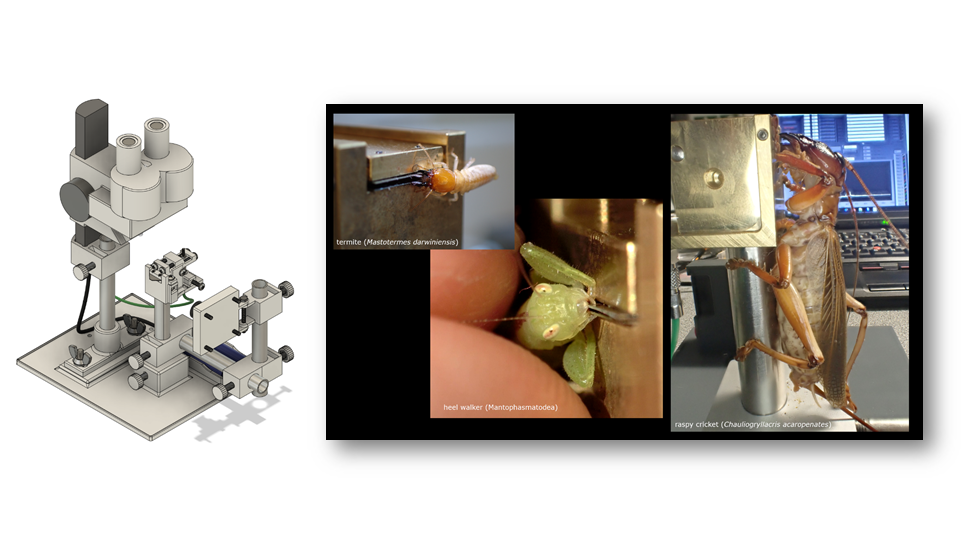
Bite Force Measurements
By the end of 2019, I was lucky to travel to Australia for several weeks just before the Coronavirus emerged. First, I had a great time at the Daintree Rainforest Observatory (DRO) (Fig. 2), after which I had the best field trip through Queensland and New South Wales with Erinn Fagan-Jeffreys and James Dorey. Altogether, I measured the bite forces of more than 200 different insect species during my time in Australia, about a third of the whole database.
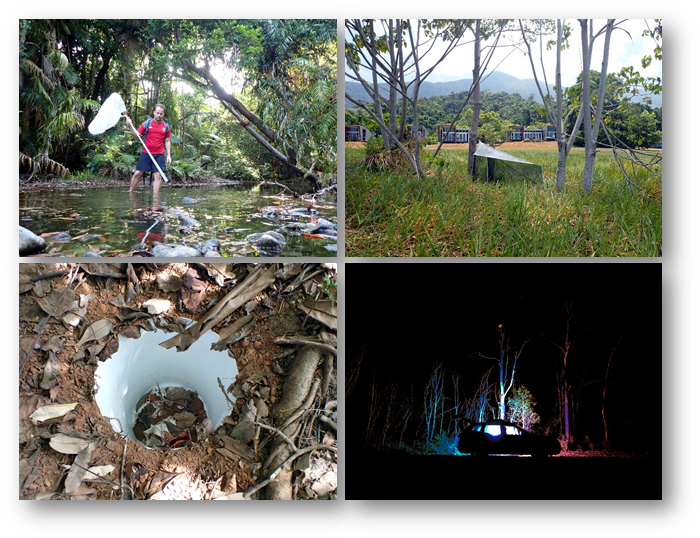
My co-author Carina Edel was able to travel to the Barro Colorado - Smithsonian Tropical Research Institute in Panama, while Melina Frenzel and Alexander Blanke collected additional bite force data in Slovenia, Greece, and Italy. In the following years, I used all chances to get out into nature, as well as to breeders and research institutes to get more insect bite forces during COVID times (Fig. 3). In addition to the bite force measurements themselves, we always measured head, thorax, body, and wing metrics of each specimen.
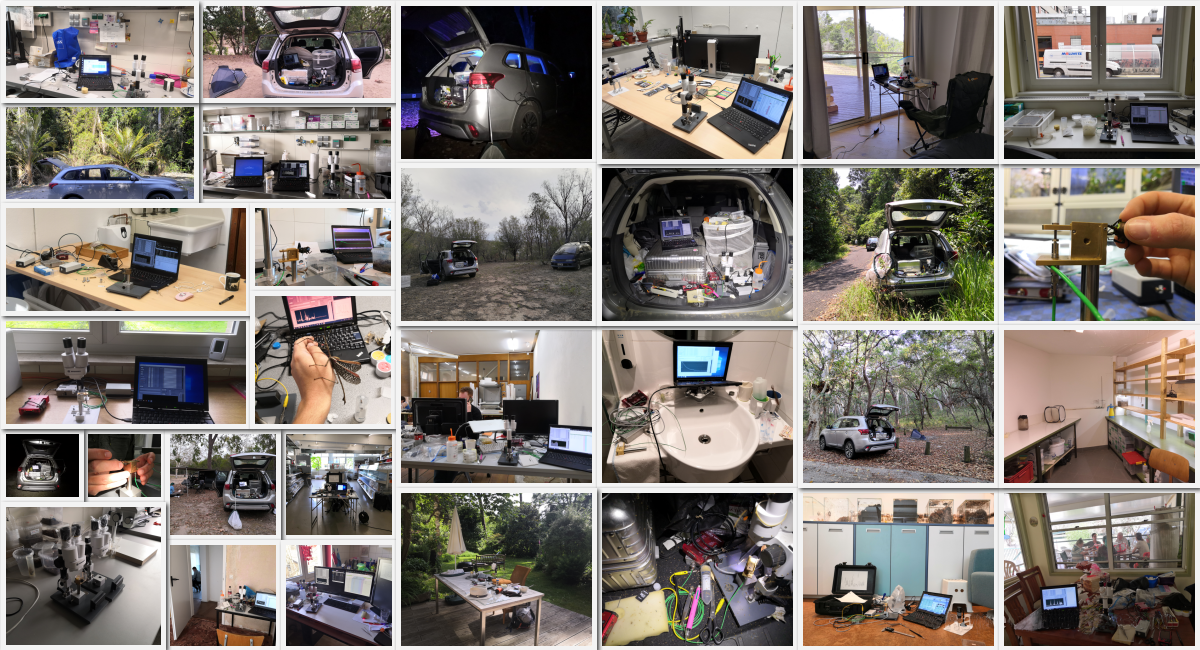
Building the Database
With the forceR package that I developed in parallel, I started cleaning the bite force measurements, extracted the maximum bite force of each specimen, and calculated bite force means per species. With the new forceX setup that largely overcame the size limitations of many previous sensors, we were able to measure insects with body lengths between 3.76 mm and 180.12 mm (Fig. 4). The final database consists of 1,906 bite force series from 1,290 specimens, representing 654 insect species from 476 genera, 111 families, and 13 orders and is available on Zenodo.
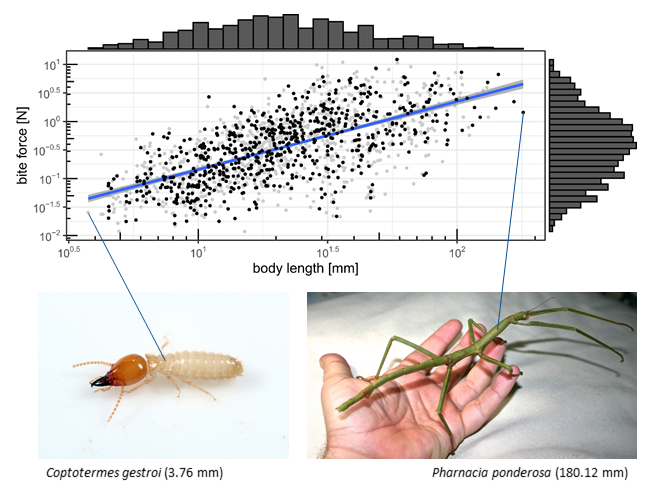
And the winner is...
...Chauliogryllacris acaropenates! Even though we were mainly interested in the drivers of bite force and its correlation with ecological and behavioural factors such as diet or flight capacity, I also want to share with you the winner of all absolute bite forces ever measured in insects: a female of the raspy cricket Chauliogryllacris acaropenates, a species that was newly described only a year before. During one of my first nights at DRO, I walked through the Daintree Rainforest with a school class from Woree State High School, when on one of the bridges a student made me aware of the large insects perching on the bridge railing. The students did not want to catch it themselves, and when I caught it, I understood why: with its fierce mandibles (Fig. 5) it bit right through the skin of the palm of my hand. Struggling with the stowage of this specimen in a box, I told the class that I thought that this was quite a strong bite, the consequences of which I could still see dripping down my hand. Later that night in the lab, I was thrilled to see this female bite with more than 12 N, a value almost twice as high as the bite force of the stag beetle that was the record holder at the time. Females of C. acaropenates are known to bite little caves into living trees to live in, an activity where high bite forces might come in handy for these nocturnal ambush predators.
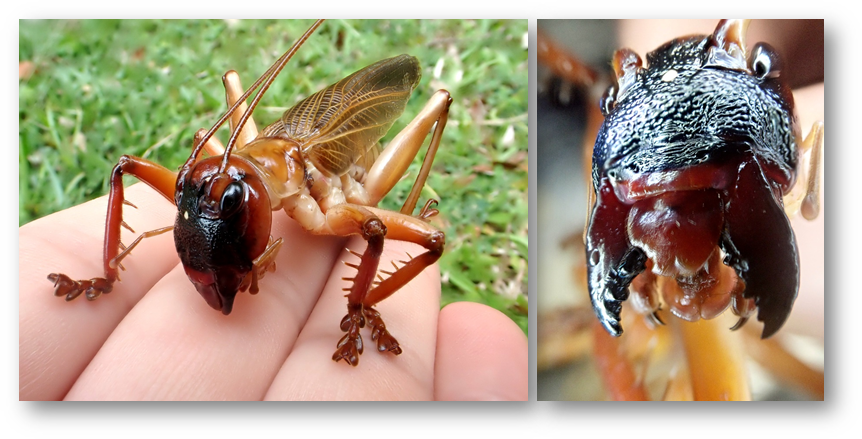
Follow the Topic
-
Scientific Data

A peer-reviewed, open-access journal for descriptions of datasets, and research that advances the sharing and reuse of scientific data.
Related Collections
With Collections, you can get published faster and increase your visibility.
Data for crop management
Publishing Model: Open Access
Deadline: Jan 17, 2026
Computed Tomography (CT) Datasets
Publishing Model: Open Access
Deadline: Feb 21, 2026


Please sign in or register for FREE
If you are a registered user on Research Communities by Springer Nature, please sign in